As West Virginia begins to rebuild after the devastating flooding in our state, I wanted to provide an update on the steps being taken to ensure our residents, businesses and communities have the resources needed to recover. I urge all West Virginians to remain cautious, and continue helping friends and neighbors in need. Although the recovery won’t happen overnight, West Virginia is strong, and we will rebuild.
FEMA and SBA Assistance
Today, I visited the National Armory in Charleston, which is serving as the reception center for FEMA staff as they arrive from all over the country to begin their deployment throughout the state. FEMA has deployed more than 250 staff to West Virginia, and 1,000 registrations for the FEMA Individual Assistance program have been received.
I met with FEMA’s Deputy Federal Coordinating Officer Bill Watrel, as well as representatives from the Small Business Administration (SBA) to discuss federal assistance for our residents and businesses. Requests were made for emergency housing, portable restrooms and dumpsters, and FEMA provided an update on adding additional counties to the disaster declaration.
Individuals in the disaster area can apply for FEMA assistance online at DisasterAssistance.gov or call 1-800-621-3362.
Businesses in the disaster area can apply for loans directly through the SBA. The loan application process can be started electronically at disasterloan.sba.gov/ela or by calling 1-800-659-2955. More information is available here.
Visits to Affected Areas
I visited the hardest hit areas of West Virginia over the weekend to assess recovery efforts. I was devastated to see the damage this flooding has caused. On Friday, I visited White Sulphur Springs and on Saturday I met with state and local officials in Clendenin. The West Virginia National Guard and FEMA also led a helicopter tour of the damage in Richwood and the Greenbrier Valley, and we viewed the Summersville Dam in Nicholas County. We discussed the need for water, debris clearing and temporary housing for impacted West Virginians. Watch aerial footage here and view photos below.
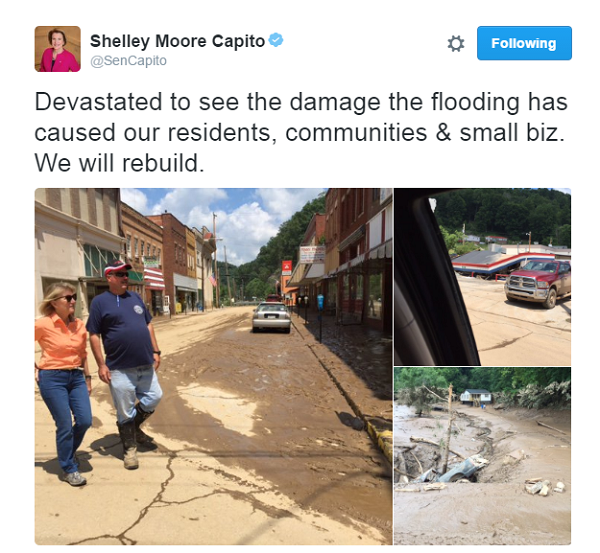
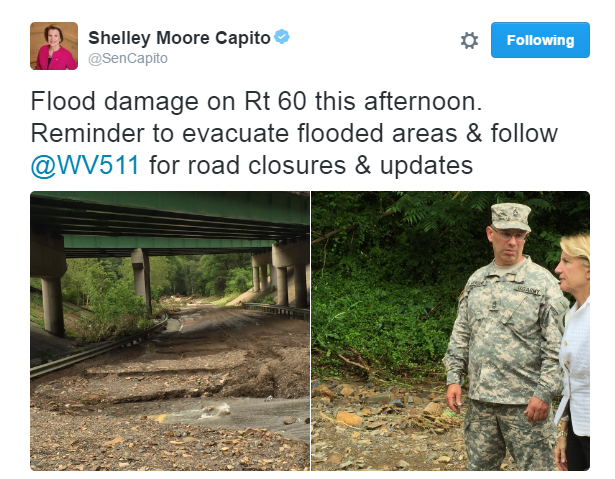
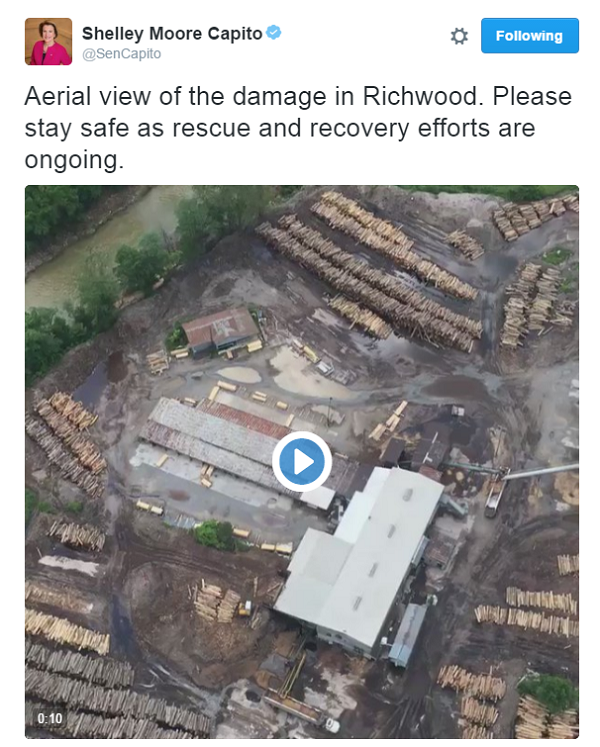
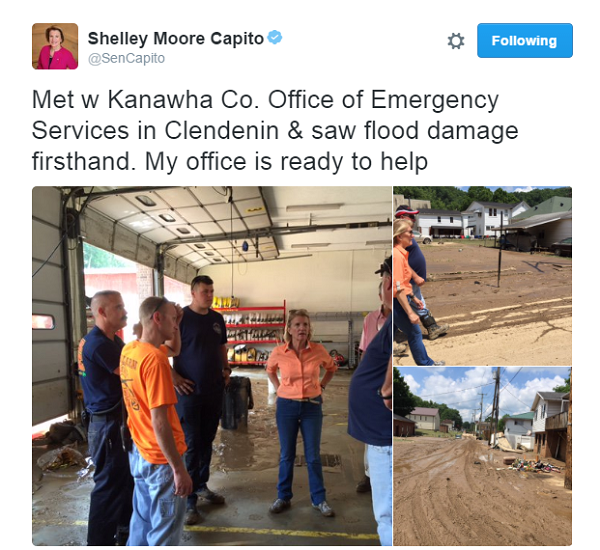
Federal Disaster Declaration
The entire West Virginia congressional delegation sent a letter supporting Governor Tomblin’s request for a Federal Disaster Declaration on Saturday. I was glad the president swiftly approved the disaster declaration for Kanawha, Greenbrier and Nicholas counties. This declaration opens up federal assistance for medical support, housing and other immediate needs in these severely impacted regions. Webster, Fayette, Roane, Summers, Monroe, Clay and Pocahontas Counties are now being assessed for federal assistance as well.
Capito Staff Deployed Throughout West Virginia
Members of my staff are deployed throughout West Virginia to help with recovery. Today, representatives from my office visited Camden-on-Gauley in Webster County, Ronceverte, Lewisburg, Rupert and White Sulfur Springs in Greenbrier County, Geary Elementary School in Roane County, Birch River in Nicholas County, the Clay County Health Department, and several fire departments in Clay and Roane Counties, where they assisted with emergency response operations, and met local officials and residents.
Any West Virginians in need of assistance, are encouraged to contact my Charleston office at 304-347-5372.
Get Emergency Updates and Assistance
An app offered by FEMA provides critical information about shelters, disaster resources and applying for assistance. Download the app here.
Kanawha County’s emergency app, KC Ready, also provides local emergency response updates. Click here to download the app.
Flood watch remains today
A flood watch is still in effect for parts of West Virginia. Please be safe and call my office at 304-347-5372 if you need assistance.
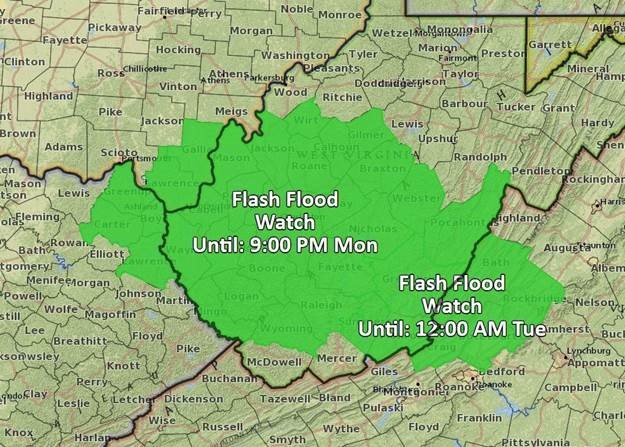
Photo provided by the National Weather Service
Road Closures
View the latest road and bridge closure report from the West Virginia Department of Transportation here.
Safety Tips During and After a Flood
The following information is provided by FEMA:
West Virginia Division of Homeland Security and Emergency Management
For more emergency response information, or to find a local emergency response office, please visit the West Virginia Division of Homeland Security and Emergency Management’s website here.
American Red Cross
If you would like to help those impacted by the flooding, you can register as a volunteer with the Red Cross by clicking here.
The Red Cross is also maintaining a hotline, 1-800-REDCROSS, and a list of shelters is available here for those in need of assistance.
Volunteer West Virginia
Volunteer West Virginia has offered the following information about how to help:
I will continue updating my Twitter and Facebook pages throughout the week with more information. If you need assistance, please contact my office at 304-347-5372. Stay safe.